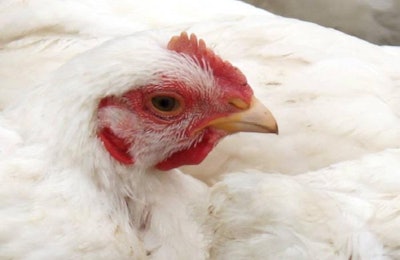
Sanderson Farms reported a net loss of $38.6 million for the first quarter of fiscal year 2020, compared to a net loss of $17.8 million for the first quarter of fiscal 2019.
Net sales for the first quarter of fiscal 2020 were $823.1 million compared with $743.4 million for the same period a year ago.
The company on February 27 reported its financial results for the quarter that ended on January 31, 2020.
“Our results for the first quarter reflect continued challenging market conditions with market prices for boneless breast meat produced at our plants that process larger birds for food service customers reaching record low levels in January,” said Joe F. Sanderson, Jr., chairman and chief executive officer of Sanderson Farms. “However, average prices for tray pack products sold to retail grocery store customers were slightly higher when compared with the same period a year ago on improved product mix, and prices continue to reflect a good supply and demand balance in that market. Demand and prices for jumbo wings strengthened seasonally during the quarter, and market prices averaged above last year’s first quarter.”
Overall market prices for poultry products were lower during the first quarter compared with the same period last year. Compared with the first fiscal quarter of 2019, the average realized prices of the Company’s retail tray pack products were approximately 0.6 percent higher, boneless breast meat prices were approximately 3.4 percent lower, bulk leg quarter prices increased by approximately 22.6 percent, and jumbo wing prices were higher by 3.1 percent. The company’s average feed cost per pound of poultry products processed was higher by 6.3 percent compared with the first quarter of fiscal 2019, and prices paid during the quarter for corn and soybean meal, the Company’s primary feed ingredients, increased 10.1 percent and decreased 2.3 percent, respectively, compared with the first quarter of fiscal 2019.
“Both corn and soybean balance tables are healthy heading into the 2020 planting season, and we believe the world has an adequate supply of both grains,” added Sanderson. “Had we priced all of our grain needs for fiscal 2020 at yesterday’s Chicago Board of Trade futures contract prices, cash paid for feed grains during fiscal 2020 on fiscal 2019 volumes would be relatively flat with fiscal 2019.
Looking forward
Sanderson said the company has optimism for the coming quarters.
“We have several reasons to remain optimistic about poultry markets in 2020,” Sanderson continued. “While market prices for boneless breast meat produced for food service customers remain under pressure and market conditions during our first fiscal quarter were very challenging, we continue to be positive about our opportunities in both the domestic and export markets over the next year. With respect to domestic markets, we expect to see continued favorable demand in retail grocery stores. Chicken remains favorably priced compared to other proteins, and we believe that dynamic will continue. We also believe we will see improved demand from food service customers, supported by an increase in promotional activity for chicken at quick serve restaurants,” he said.
China trade
With respect to the export markets, Sanderson said the outbreak of African swine fever (ASF) in China has affected the worldwide supply of pork, creating a significant protein deficit that should ultimately benefit poultry markets in the United States.
“China lifted its nearly five-year ban on the import of United States poultry at the end of calendar 2019, and we resumed shipments to China almost immediately. Since the ban was lifted, we have shipped to China or have received orders from our customers in China for approximately 18.0 million pounds of chicken products, including dark meat parts. We continue to receive strong indications of interest for our products from buyers in China, and we were pleased to see the recent announcement regarding the reduction of tariffs on United States poultry, which should further support our business,” he said.
“While the devastating COVID-19 virus is currently disrupting the markets, depressing demand, negatively affecting shipping and supply chain logistics and slowing China’s economic growth rate, we believe demand for protein from China is strong, and we expect to benefit in 2020 from the return to an open market.”
New complex in Tyler, Texas
Sanderson Farms is moving toward full production at its new poultry plant in Tyler, Texas.
The start-up has gone well and Sanderson expects the facility to reach full production during the company’s second fiscal quarter.
“We look forward to the opportunities the plant will create,” added Sanderson.
















